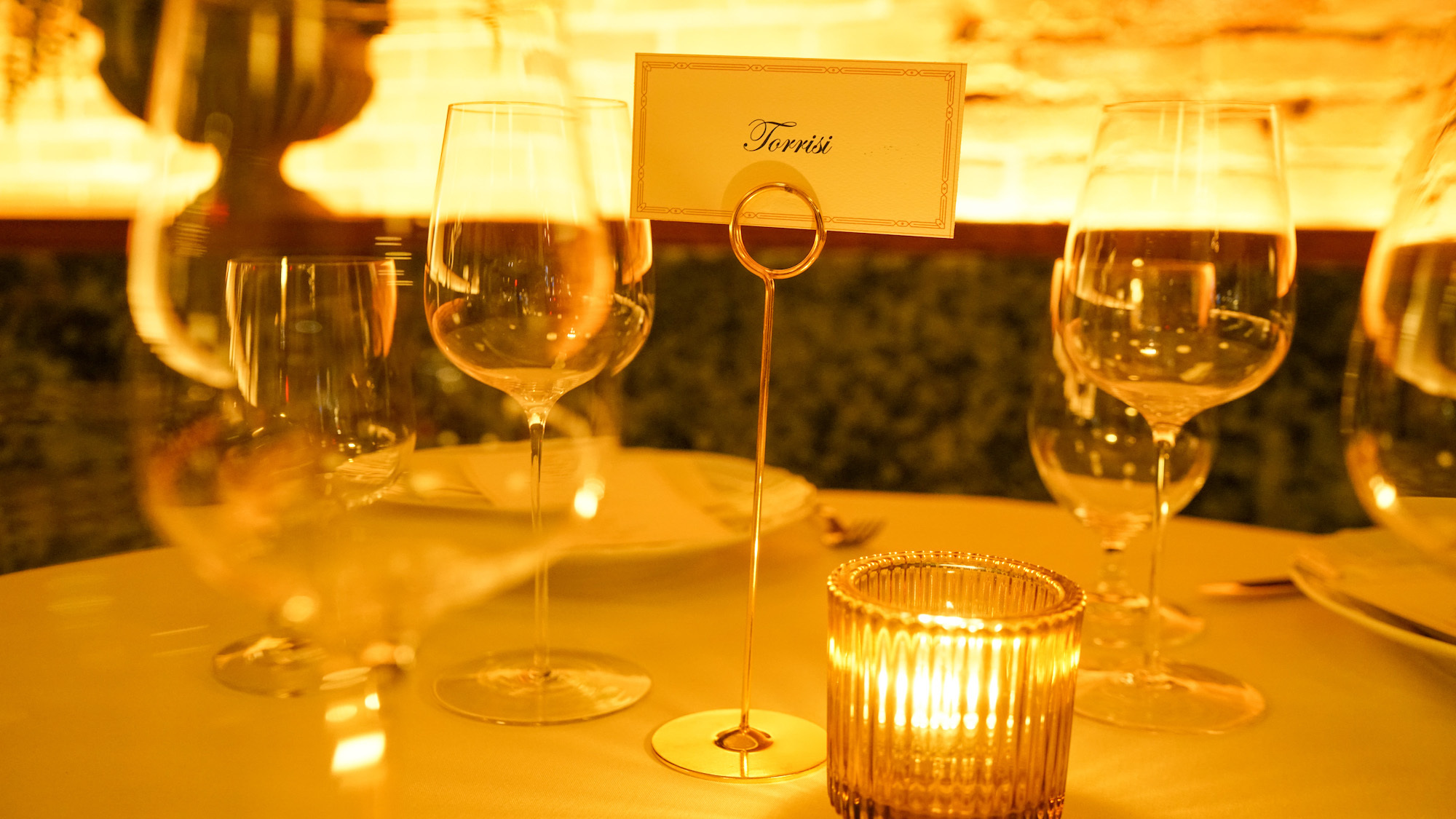
Torrisi Is Back. The Mozzarella Is Flowing, But Don’t Call It the Same Old Spot
In 2010, one of the hottest dinners in New York City was an affordable tasting menu found on Mulberry Street, in the heart of Manhattan’s Little Italy. Two young chefs, fresh off the lines of two of the city’s most intense fine dining kitchens, were serving wildly imaginative food that fused together their classical experience with everyday Italian American cuisine — an underappreciated style of cooking in prominent restaurants at the time. If affordable tasting menus and underrepresented cuisines sound a little bit like déjà vu in 2022, well, let’s just say that what’s old can always be new again.
That restaurant was Torrisi Italian Specialties, and the chefs were none other than Rich Torrisi and Mario Carbone. Torrisi, as it was called, was their first restaurant together — and a ground-breaking preview of what was in store for New York’s dining scene. Their initial $50 tasting menu celebrated humble Italian American home cooking at a time when restaurants like Babbo and Marea were receiving praise for their luxe takes on “real” Italian cuisine. The New York Times prophesied, almost uncannily, that the two would “cook this way until it gets boring, and then will do something else.” That year Torrisi and Carbone partnered with Jeff Zalaznick back to form Major Food Group (MFG), which today is equal parts restaurant group and cultural behemoth. Over the next twelve years, MFG would become the mothership for a string of influential projects.
Those would include: Parm, the fast-casual Torrisi Italian Specialties sandwich spin-off; the appetizing-inspired Sadelle’s, now in six cities; and Dirty French, the group’s tribute to Europe’s other great cuisine. Oh, and a small restaurant on Thompson Street you might have heard of: Carbone, red-sauce reborn as top-dollar dinner theater. Carbone, which opened in 2013, remains one of New York City’s hardest tables. Spin-offs can now be found from Miami to Hong Kong.
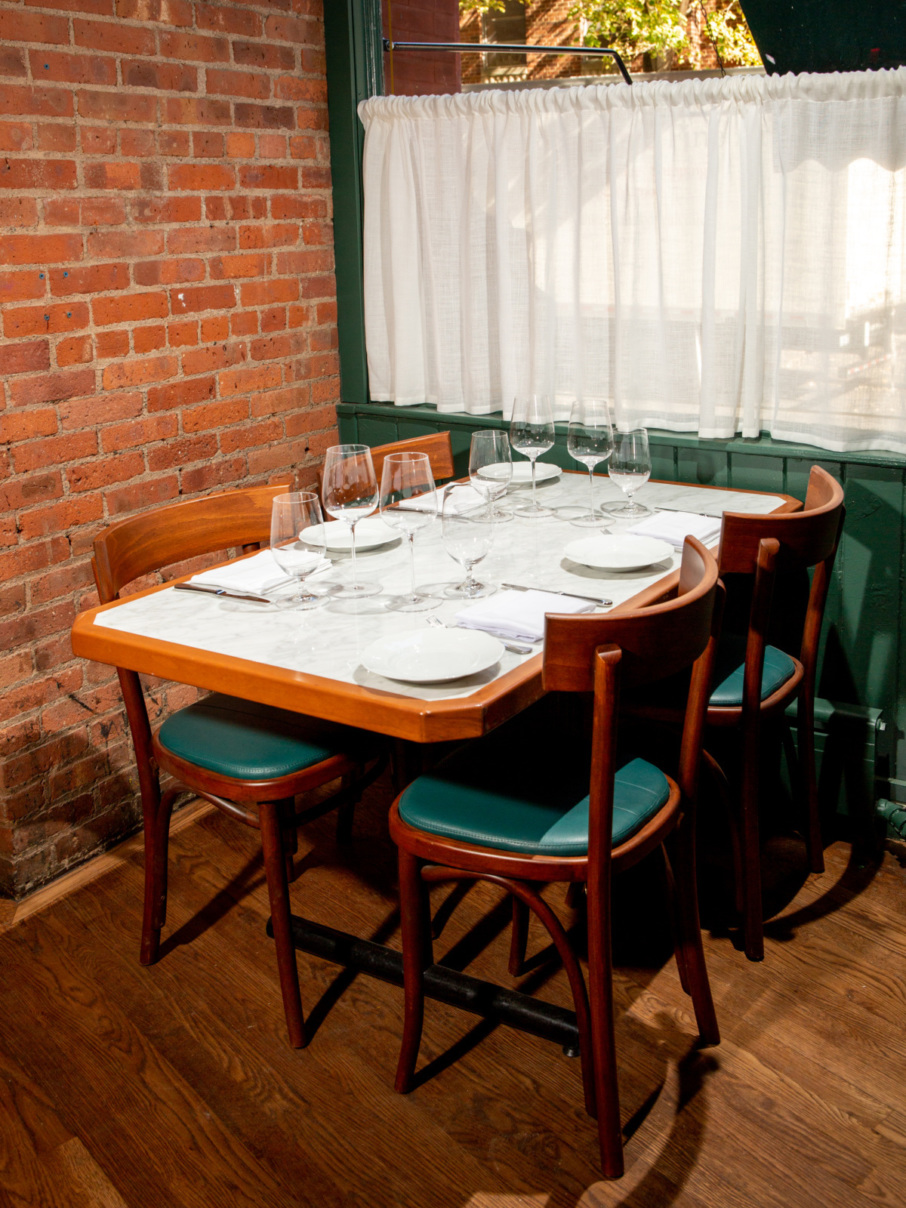
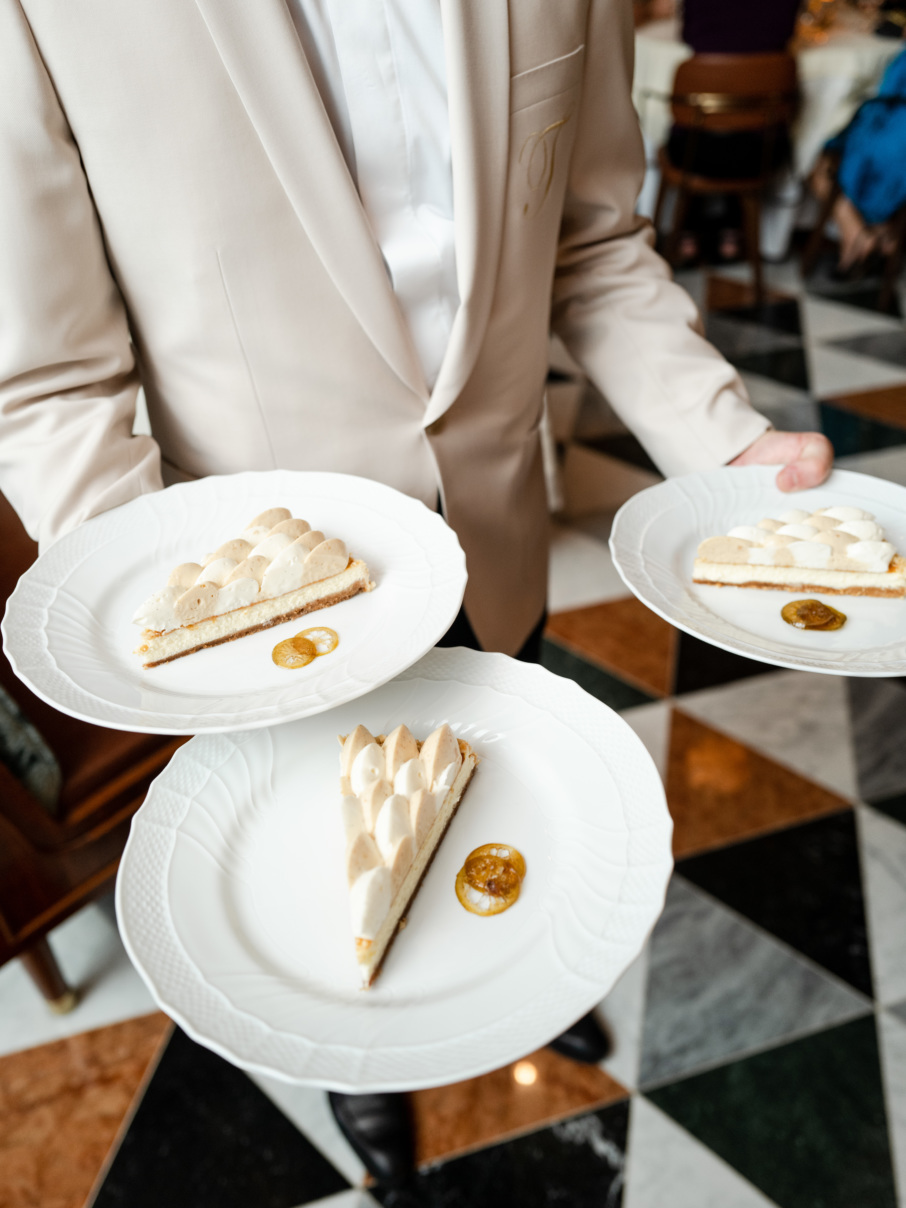
As for Torrisi Italian Specialties, it closed on New Year’s Day in 2015. But its impact — in framing red-sauce Italian as a distinctive and meaningful cuisine — was remembered by the wide swath of New Yorkers who recognized its importance at the time. Which is why the opening of Torrisi Bar & Restaurant this week, less than one block away from the original, is not just a homecoming for the chefs, but a piece of New York dining history brought to life.
Sort of. Despite the restaurant’s fortuitous proximity to its original address (it’s literally within 400 feet) and some key design parallels, notably the olive-green palette, it wouldn’t be right to say the restaurant has come full circle — and Torrisi and the whole MFG team are clear that this is in not just a return of the original. Things have changed from those early days on Mulberry Street.
It’s better, then, to say that new Torrisi is an evolution of Torrisi 1.0, one that still embodies the same vision of celebrating Italian American cuisine — a vision that preceded Carbone, even if the latter restaurant often gets credit for launching the red sauce-meets-fine dining trend. “It’s the love for New York Italian American food. That’s what Carbone is, that’s what Torrisi started as,” Rich Torrisi says. But this time, the restaurant will have all the trappings of a fine dining Italian American restaurant, as supported by the deep resources of Major Food Group. And it would have to be different, because Torrisi Bar & Restaurant is landing in a dining culture that has been cultivated by Carbone. The stage is bigger — and the stakes higher — than they were in 2010.
So, first of all, the space in the historic Puck Building is about five times bigger. The 20-foot-plus ceilings with oversized windows are a far cry from the charming, if dim and cramped, dining room down the street. The team has spared no expense in matching the built-in grandeur with green gem-toned marble, custom designer tablecloths, and enough gold trim to make Midas jealous.
The very spacious bar, which is first-come, first-serve, will have its own energy relative to the rest of the dining room. Facing an oversized distressed mirror, this part of the room has a brasserie-like feel, hinting at Rich Torrisi’s fondness for a light Gallic touch, perhaps a result of his time at Café Boulud and training in France. “The bar room is going to be bustling,” he says. The bar menu will also extend to a handful of outdoor tables on Mulberry Street, weather permitting.
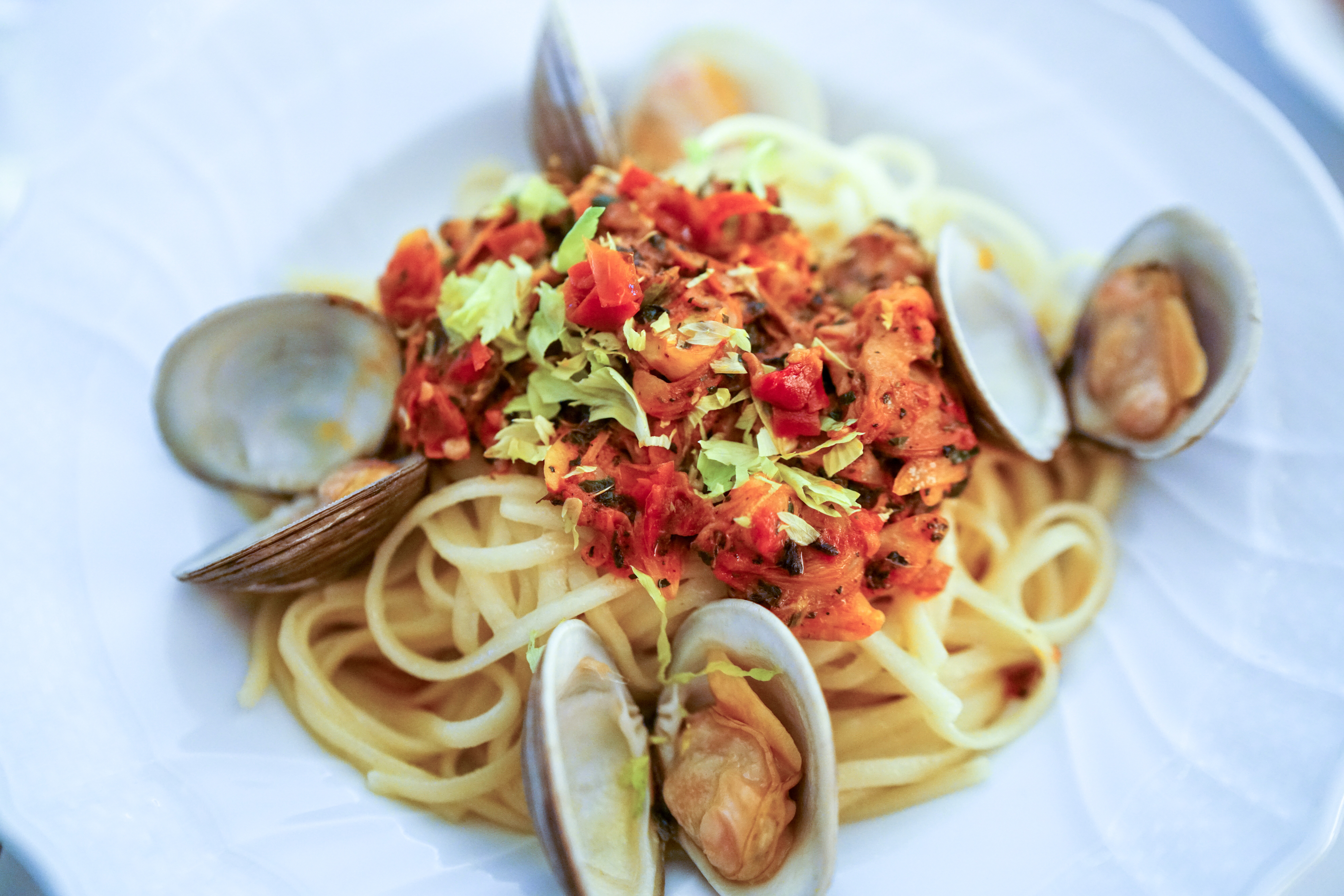
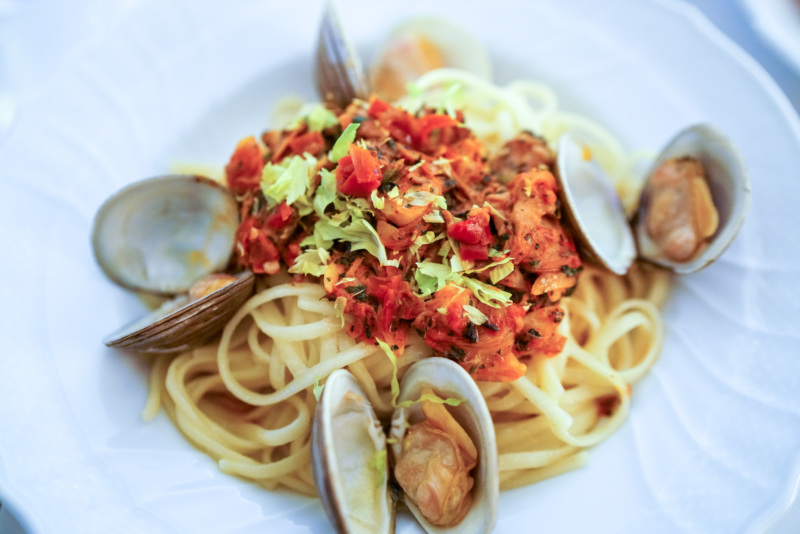
The dining room, on the other hand, is tucked into the far corner of the restaurant, enveloped in exposed red brick, with a more formal atmosphere. “The back room is kind of a fine-dining version of the original,” Torrisi explains. Although the area is cavernous, there are just fourteen tables, which will maintain a sense of intimacy.
The group has a penchant for big, statement-making works of art, and surely there will be some of that in the room, but the real eyepiece at Torrisi is the open kitchen, and it’ll be visible from pretty much every seat in the house. “We’ve never done this before as a company, we’ve never had an open kitchen. It’s very dramatic,” Torrisi says. Indeed, the kitchen is lavished with a heavy metal Molteni rotisserie, a gleaming electric slicer, a full-on hearth, and a small brigade of chefs and cooks, all on display.
In some ways, compared to Carbone’s famously theatrical service style (but very closed-off kitchen) the open kitchen at Torrisi is an extension of the show, or perhaps an inversion of the concept. “Pomp, it’s what we do,” admits Torrisi. But here, Torrisi wants the food to do the talking, because from the start, at 250 Mulberry, it was always about the food.


At the original Torrisi Italian Specialties, Torrisi and Carbone wanted to pay their respects to the nostalgic foods of their youth: Sunday gravy fare, but to do it with the approach of a fine dining restaurant. They were also hyper-locally focused, limiting themselves to American ingredients only and taking inspiration from everything they loved about eating out in New York, from Chinatown noodle shops to the Russian Jewish enclaves of Brighton Beach. “We were on this crusade,” Torrisi recalls. And it worked. The critics loved it.
There were early signs that something bigger and splashier would emerge. In 2011, Torrisi morphed into a slightly nicer and more expensive version of itself. And eventually … well, the group opened Carbone.
The goal today, as Torrisi puts it, is to rekindle that early love for food, just with a little more finesse. Those who remember Torrisi 1.0 will be happy to see a few familiar dishes resurrected on the menu, which is now à la carte. But even the familiar should feel fresh. “We’re taking all the knowledge that we’ve learned in the last ten years, the product knowledge, the technical skills that we gained, to put up the very best version possible,” says Torrisi. Mario’s new and improved clam boule will be available at the bar, the cavatelli with Jamaican beef ragu and cucumbers “New Yorkese” will make an upgraded appearance in the dining room. And for those who remember that Carbone’s social media-famous fresh-pulled mozzarella actually originated in the four walls of Torrisi Italian Specialties, yes, the mozzarella will, in Torrisi’s words, “be flowing.”
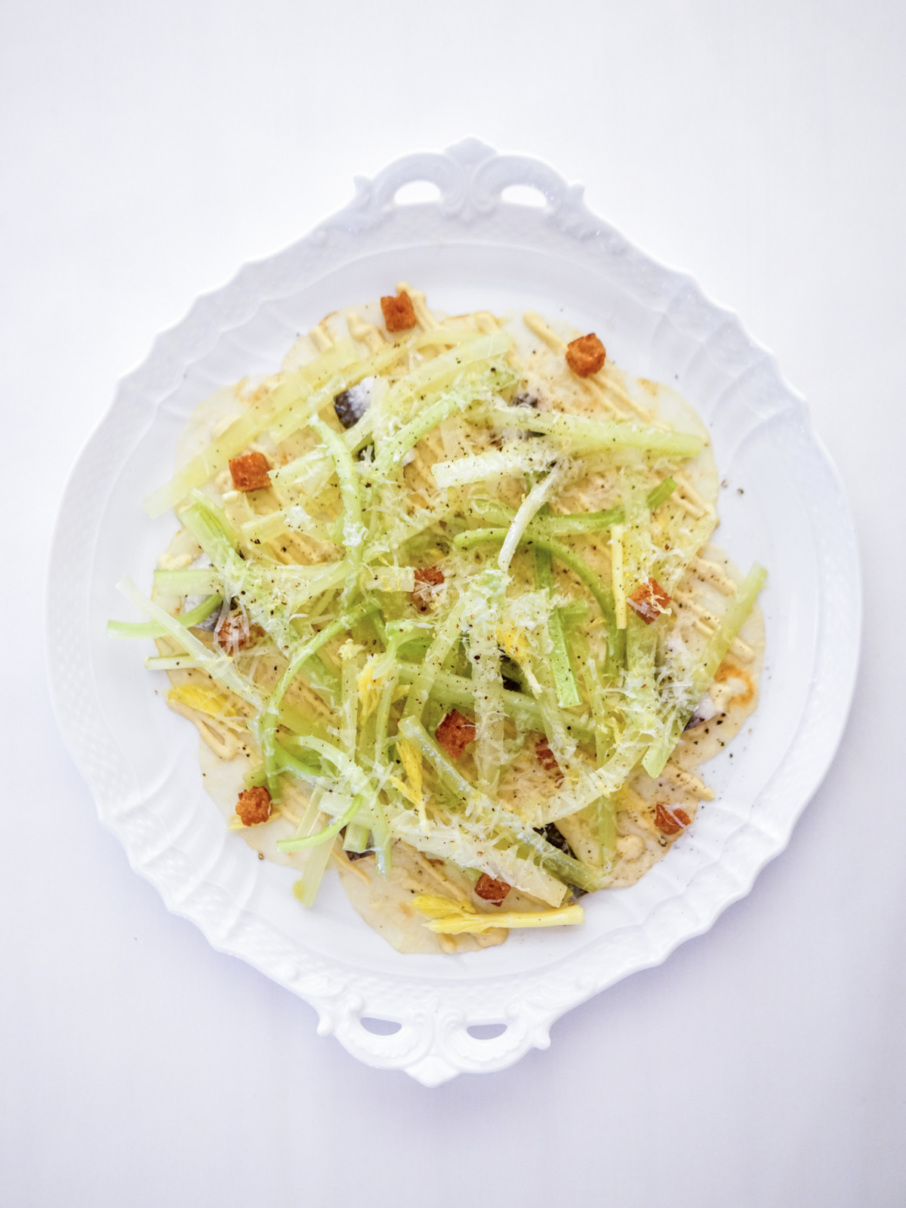
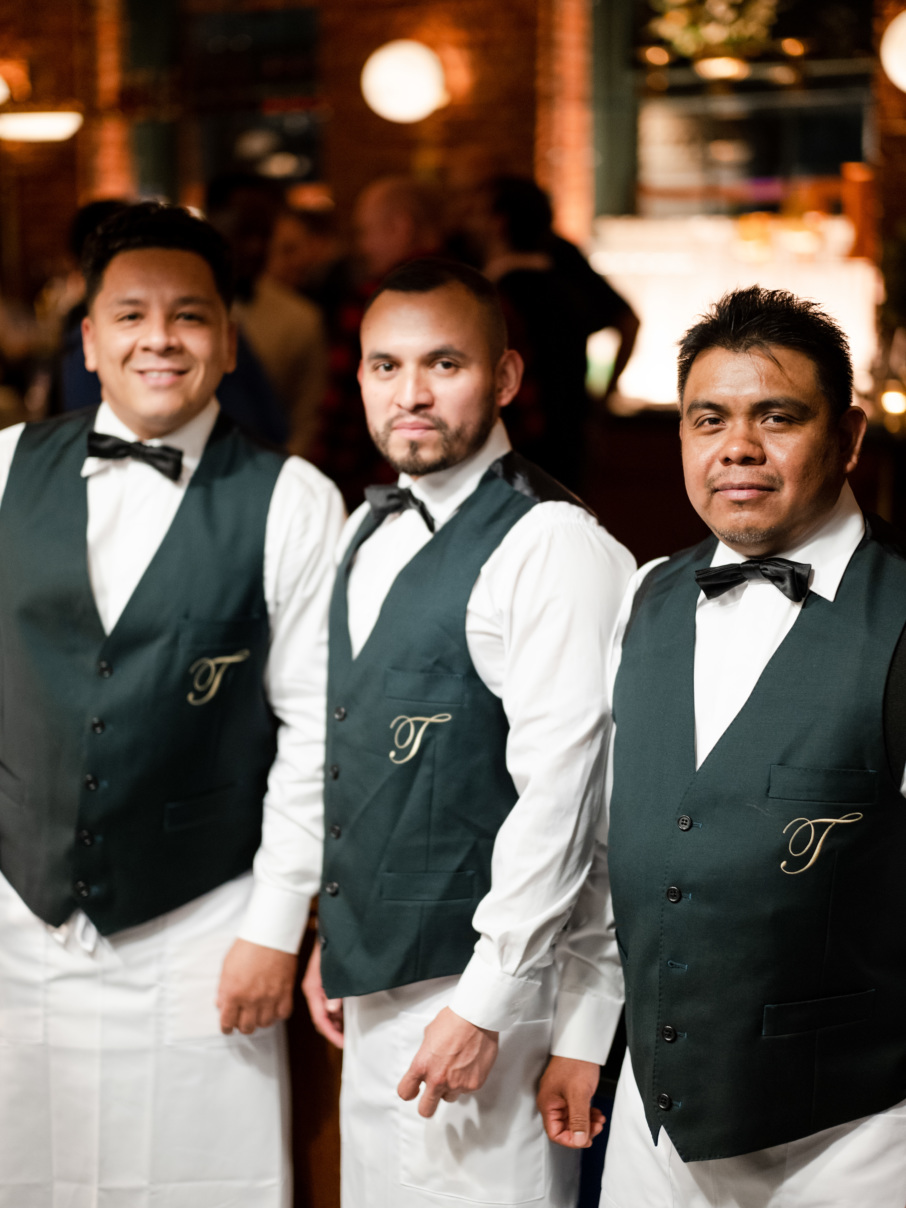
Part of the charm at the original Torrisi was the tasting menu format, which began with an array of antipasti of the day. Now, choice will define the experience. Small nibbles, called specialties on the menu, and antipasti precede a selection of pasta and larger format mains. Torrisi has been busy workshopping new creations, like a chicken Francese and duck alla Mulberry. And while they still plan on supporting local producers, the chefs are not limiting themselves to American-made ingredients. The finest imported ingredients will now compliment an equally expansive list of fine wines.
And if a sense of place, as in an Italian American slice of New York, was integral to the original Torrisi Italian Specialties, so was that cramped, six hundred-odd square foot dining room in Nolita, circa 2010. That too underscores why Torrisi Bar & Restaurant isn’t quite a reboot. “This is a brand-new restaurant, we are starting from scratch,” says Torrisi. Almost. The original Torrisi Italian Specialties sign has been restored and is hanging over the new façade with a glowing, cursive “T” scrawled over the old picture.
It’s a bona fide glow-up and, more symbolically, a mark of Torrisi, Carbone, and Zalaznick’s distinct journey. They started it all on Mulberry Street, and now they’re back.
Mahira Rivers is a restaurant critic and writer based in New York, and Resy’s dining columnist. In addition to spending five years as an anonymous inspector for The Michelin Guides, her writing has been published in The New York Times, New York Magazine, Food & Wine, GQ and elsewhere, and recognized by the James Beard Foundation. Follow her on Twitter and Instagram. Follow Resy, too.
Discover More

Stephen Satterfield's Corner Table

























